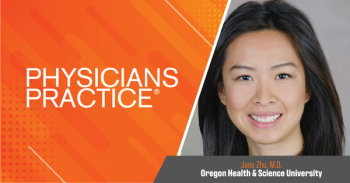
The Significance of Physician Assistant Day
A look into the history and evolution of the PA profession on the 51st anniversary of its birth.
On Oct. 6, 1967, three former Navy corpsman graduated from our nation’s first physician assistant (PA) program at Duke University. This marked the beginning of the PA profession, which now has more than 100,000 certified providers delivering care to about 400 million patients annually.
In the late 1950s and early 1960s there was great concern regarding not only the looming shortage of physicians in raw numbers, but also the maldistribution of physicians, specifically that many rural and medically underserved areas would be left without the healthcare that was desperately needed in many communities across the U.S.
To help remedy this, Eugene A. Stead Jr., physicianof the Duke University Medical Center, put together the first class of PAs in 1965. He selected four Navy Hospital Corpsmen who had received considerable medical training during their military service. Stead based the curriculum of the PA program on his knowledge of the fast-track training of doctors during World War II.
The PA concept was lauded early on and gained federal acceptance and backing in the early 1970s as a creative solution to the physician shortage. The medical community helped support the new profession and helped spur the setting of accreditation standards, establishment of a national certification process and standardized examination, and development of continuing medical education requirements.
Nobody could have foreseen the expansion of the profession, and the distribution of PAs into virtually every specialty and subspecialty, and in nearly every healthcare setting. Initially, the PA profession’s hallmark was general medicine and family practice, and for the longest time, primary-care specialties were the predominate place where you could find PAs working in the healthcare system.
Because PAs work in collaboration with physicians, it only made sense that as physicians increasingly specialized, PAs would also. This trend has accelerated over the past two decades, and today, a PA is more likely to be working in a non-primary care specialty as opposed to a primary-care setting.
One of the biggest steps forward in the history of the PA profession came with the passage of the Affordable Care Act, where for the first time, Congress recognized PAs as one of three healthcare professions in primary care.
Because of their general medical background, PAs have flexibility in the types of medicine they can practice through the course of their careers. That makes them responsive to changing healthcare needs. PAs are uniquely suited to provide preventive care services in all settings, from primary care to surgery.
PAs are educated in the medical model and have a collaborative approach to healthcare, which improves coordination of care and can improve outcomes. They are educated in intense educational programs that last approximately 26 months (three academic years). This relatively short training period means that PAs can quickly begin practice, helping offset worsening physician shortages. PAs increase access to care and are cost effective.
Studies have consistently shown that PAs provide high-quality care with outcomes similar to physician-provided care. Additionally, studies have shown that incorporating PAs into office or hospital practice can improve outcomes.
From 1967 to the present, PAs have made their mark on the delivery of medicine, and they have helped provide critical healthcare services to millions of Americans. I have been very satisfied with my long career as a PA, and it is a privilege and an honor to work with all the members of the healthcare team providing health care services to our communities.
My hat is off to all my PA colleagues in the U.S., and I wish you a great PA Day on Oct. 6.
Newsletter
Optimize your practice with the Physicians Practice newsletter, offering management pearls, leadership tips, and business strategies tailored for practice administrators and physicians of any specialty.








